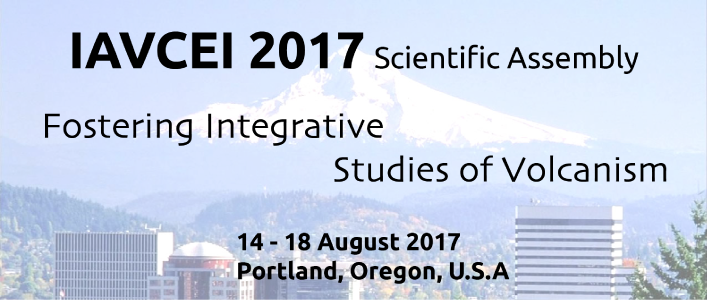SCIENTIFIC PROGRAM
IV. Volatile influences on eruption style, degassing, atmospheric chemistry and climate
IV.3 The role of volatiles and degassing in magmatic and eruptive processes
Conveners:
Patrick Allard, CNRS-IGPG, France; pallard@ipgp.fr
Mary Benage, Smithsonian Institution, National Museum of Natural History; benagem@si.edu
Jason Coumans, Durham University, UK; jason.coumans@durham.ac.uk
Thomas Giachetti, University of Oregon; tgiachet@uoregon.edu
Stephanie Grocke, Smithsonian Institution, National Museum of Natural History; grockes@si.edu
Taryn Lopez, Alaska Volcano Observatory; tmlopez@alaska.edu
Thomas Shea, University of Hawai`i; tshea@hawaii.edu
Felix W. von Aulock, University of Liverpool, UK; fva@liv.ac.uk
Volatile components play a major role in magmatic processes and eruptive phenomena, and are therefore key to understanding the nature of volcanic eruptions and forecasting eruption style and intensities. The composition, content, speciation, and state of volatiles in the magma, whether dissolved in the silicate melt/glass or exsolved as a vapor phase in isolated or interconnected bubbles, continuously evolve before (e.g., magma recharge, mixing, crystallization, repressurization), during (e.g., magma degassing, outgassing and ‘regassing’), and after (e.g., rehydration) a volcanic eruption. Volatiles dissolved in the melt or exsolved into gas bubbles profoundly affect the physical properties of magmas, including density and viscosity, which in turn influence magma ascent rate, potential for fragmentation, and eruption style and intensities. Studies of gas emissions and/or volatile contents in volcanic products therefore help constrain the evolution of both magmatic and eruption processes. However, how to use interpretations of volatile/gas measurements at active volcanoes to accurately link pre-eruptive processes to the eruption style and its temporal evolution remains an outstanding question.
This session invites contributions that address any aspect of the behavior and role of volatiles before, during, and after a volcanic eruption. Field-based, monitoring, geophysical, experimental, theoretical or numerical approaches are all welcomed. Multi-disciplinary studies at active volcanoes that illustrate the relationships between expected/measured gas emissions and the temporal evolution of the eruption style, which are essential for advancing our ability to forecast different types of volcanic activity and eruption intensities, are particularly encouraged.


